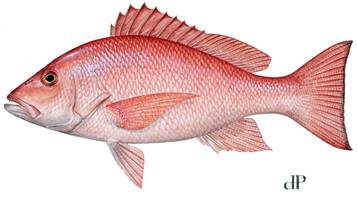A new red snapper angler reporting system is showing progress in counting a species desired by both recreational and commercial anglers, but the far-reaching results and the success of the endeavor remain to be seen.
The Texas Parks & Wildlife Department’s Coastal Fisheries Division staff asked Texas anglers to report their red snapper landings beginning June 1, at the start of the nine-day federal snapper fishing season through their pilot reporting program and submit basic information about their catch. The survey questions included the trip’s red snapper catch, the date it occurred and the number of fish landed.
Overall, 119 fishing trips were recorded through the online reporting system, according to a news release. More than 700 anglers harvested 1,511 red snapper within federal and Texas state waters in June. TPWD recorded an additional 4,096 red snapper from targeted creel surveys conducted at boat ramps. The survey information was gathered from 1,917 anglers after their trips.
The data, along with other harvest monitoring programs, will be used to help design harvest programs and indicate the health of the red snapper fishery off the Texas coast.
Red snapper has remained a contentious issue, and the Gulf of Mexico Fishery Management in a stunning move in April approved an 11-day Gulf recreational snapper framework, with a decrease in the overall catch quota for recreational and commercial anglers. The season was later cut to just nine days.
The bag limit in federal waters remains two fish that are at least 16 inches long, while the daily framework in Texas state waters — where fishing is allowed year-round — is four fish which must be at least 15 inches. However, more than 95 percent of the red snapper landed in Texas come from federal waters, according to Texas Parks and Wildlife figures. Most of that catch – about 80 percent – comes from head boats which take out numerous paying clients offshore.
In Texas federal waters begin 9 nautical miles from the coast and extend 200 nautical miles.
The length of the federal recreational season in the Gulf is determined by the amount of the quota, the average weight of fish landed and estimated catch rates over time. NOAA Fisheries is responsible for ensuring the entire recreational harvest, including harvest in state waters, does not exceed the recreational quota. Therefore, if states establish a longer season or a larger bag limit for state waters than the federal regulations allow in federal waters, the federal season must be adjusted to account for the additional harvest expected in state waters.
The Gulf council in December set a 40-day recreational red snapper season.



















